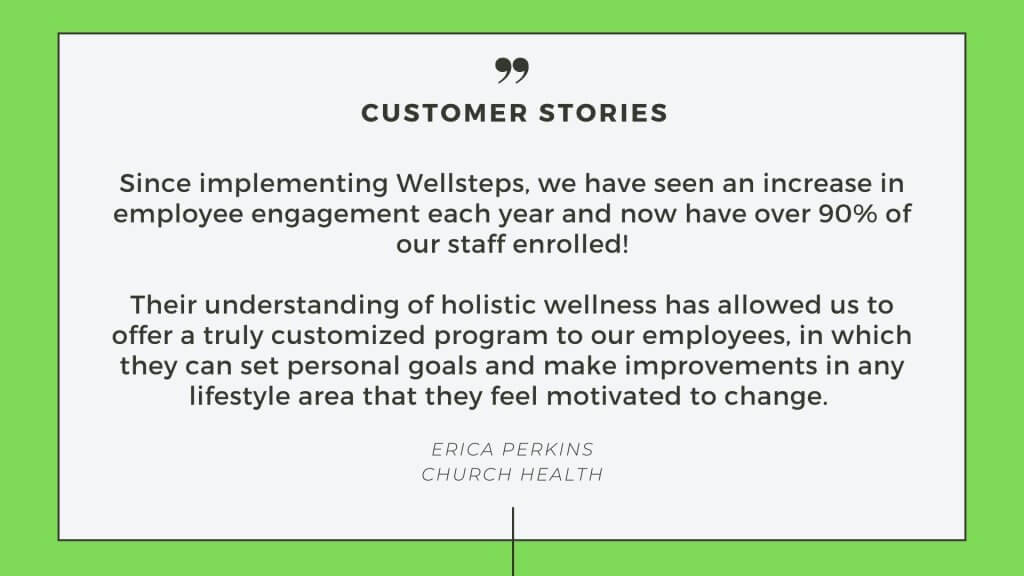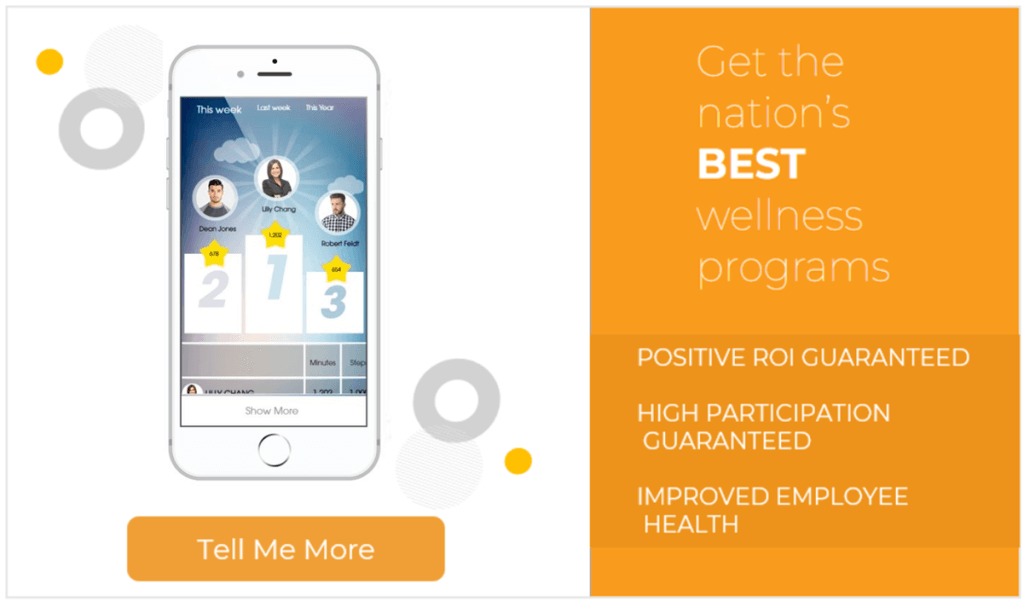Creating a productive workforce is the key to establishing and managing a successful company. When employees work hard and produce quality results quickly, it contributes to the profitability and growth of the organization.
According to a report by Gallup’s State of the Local Workplace, approximately 85% of employees worldwide are not actively engaged at work. The lost productivity from their disengaged work performance has cost companies around $7 trillion.
What makes an employee want to work hard for their employer? After all, it would be easy for an employee to do the bare minimum to continue getting a paycheck. So why would an employee go the extra mile to help their employer make more money?

A productive workforce helps employees in the following ways:
- Job security
- Pay increases
- Promotions
- Job opportunities for new employees
- Better benefits (e.g., healthcare, dental)
Employees have plenty of incentives to be productive in the workplace. But if employees don’t possess the necessary traits to sustain productivity, it will be reflected in their work performance.
If employees don’t possess the necessary traits to sustain productivity, it will be reflected in their work performance.
The primary traits of a productive workforce are as follows:
- Self-direction
- Time management
- Happiness and positivity
- Energetic
- Healthy working relationships
- Problem-solving
- Personal and professional growth
Not every employee comes into an organization with these traits. That is why employers must help their employees develop these traits to become more productive in the workplace.
RELATED: How to Use Wellness Programs to Boost Team Morale
What is a Productive Workforce?
A productive workforce, or workforce productivity, refers to the amount of goods, services, or work that employees produce within a specific period. So if the value of their total work output surpasses the employer’s total labor costs, the employees would be considered a productive workforce.

A significant part of an employer’s job is to measure the productivity of their employees. The advantages of workforce productivity measurement are as follows:
- Determines the skills and abilities of each employee and where they would be most effective working in the organization.
- Discovers employees who are slacking off or not doing a good job.
- Allows employers to make better operational decisions.
- Easier to make investment decisions for things like new equipment, additional workspace, and more employees.
Employers will often look at these measurements to determine whether their organization has a productive workforce:
- Total input vs. total output
- Labor intensity and quality
- Customer satisfaction and feedback
- Peer assessment and feedback
- Number of daily assigned tasks completed
- Profit growth
Does your organization lack a productive workforce? Don’t worry because there are ways you can improve workforce productivity while helping your employees at the same time.
RELATED: The Correlation Between Wellness Programs and Increasing Productivity in the Workplace
What Makes a Productive Workforce?
Making a productive workforce requires evaluating and incentivizing employees to do a better job. Unfortunately, many employers fail at this because they don’t know how to connect with their employees and give them more drive to succeed.
Let’s explore the top 10 ways to establish and maintain a productive workforce.
1. Wellness Programs
Poor productivity in the workplace is often the result of presenteeism. Employees who have illnesses, injuries, or other personal problems cannot function well at their jobs. They may show up to work physically, but they often make mistakes and lack the enthusiasm to do their job well.
If you want your employees to have more enthusiasm and make fewer mistakes, you need to introduce effective wellness programs to your organization. You could create wellness programs that help your employees with the following:
- Quit smoking
- Manage finances
- Gain access to healthier foods
- Offer physical activity opportunities
- Link women to professional reproductive health care providers
- Relieve stress and sleep better
- Execute lifestyle changes
- Manage diseases effectively
Wellness programs are a vital component of a productive workforce because they specifically focus on employee wellness to increase productivity. Employee wellness and productivity go hand in hand because you cannot have one without the other.

RELATED: How Do Wellness Programs Increase Productivity In The Workplace?
2. Improve the Workplace Décor
Workplace décor has a significant impact on workforce productivity. Since most employees spend all their working hours in the same building or environment, they need something attractive and exciting to look at throughout their workdays.
Here are some workplace décor improvement ideas:
- Repaint the walls with more vibrant colors
- Add plants and greenery in the rooms and offices
- Allow more natural lighting inside
- Give employees more access to windows for outside visibility
- Add comfortable furniture pieces (e.g., sofas, lounge chairs, etc.)
Good-quality workplace décor reduces stress and anxiety amongst employees and allows them to focus on their jobs more closely.
RELATED: How Wellness Programs Help Improve Employee Morale
3. Create a Positive Work Culture
Employees traditionally perceive their employers and bosses as uptight, arrogant, and ungrateful. If your employees negatively view their work environment, they won’t feel compelled to work hard and increase productivity.
A positive work environment will often create a more productive workforce. However, the managers and supervisors are responsible for establishing a positive work environment for their employees.
You could help create a positive work culture in the following ways:
- Greet and complement your employees
- Try to smile more around your employees
- Reward employees who finish more tasks
- Host random food parties and other special events
- Celebrate employee birthdays and workplace anniversaries
- Speak softly and kindly to employees
You’ll be amazed how quickly workforce productivity will rise in your organization after management follows these tips and ideas.
4. Offer Continuous Employee Training
New employees shouldn’t be the only ones you train. A continuous training program is essential for improving the knowledge and skills of your workers and providing insight into their strengths and weaknesses.

Rapid changes occur in almost every industry. Employees need continuous education to receive the most up-to-date information to do their jobs well and avoid mistakes.
You can train employees in:
- Using the newest equipment, tools, and computer technology
- Communication skills
- The newest software programs
- Managing and supervising
- Quality control
An annual or bi-annual employee training requirement could make a significant difference in establishing a more productive workforce.
5. Give More Freedom to Your Employees
Employees work better when they can be themselves and not worry about strict rules and restrictions, such as dress codes, work schedules, etc.
Here are some ways you can give more freedom to your employees:
- Allow employees to wear casual clothing
- Ask employees to submit suggestions and comments about their jobs
- Let employees set work schedules that are convenient for them
For example, give your employees the freedom to express themselves to their supervisors and managers. You could have private one-on-one discussions with each employee and ask them what improvements they would like to see made in the organization.
Give your employees the freedom to express themselves.
Alternatively, you could have your employees submit suggestions in a drop box anonymously. Some employees may be more honest if they know their identities are protected.
The goal is to understand their feelings about their jobs, so you can see where to make improvements for creating a more productive workforce.
6. Set Goals for Your Employees
Your employees will be motivated to work hard if you state the company’s goals clearly. Setting goals and assigning tasks for your employees will give them something to work towards and a sense of accomplishment when they succeed.

Here are some tips on how to set goals for your employees to increase workforce productivity:
- Create long-term goals for increasing the company’s productivity, profitability, and growth.
- Assign short-term goals that accommodate the company’s long-term goals. You cannot have one without the other.
- Establish criteria and guidelines to help your employees accomplish these goals.
- Allow employees to suggest job-specific goals related to their positions in the company. In most cases, employees have better insight into their jobs than their bosses who manage them.
Employees want to feel like they bring value to the company. If employees feel like they’re succeeding at something, they will have more motivation to continue working hard.
7. Provide Feedback to Employees
Provide your employees with honest and constructive feedback on their work performance in the company. Employees can only grow and become better workers if they know the truth about their work quality and productivity.
Here are the best ways to offer feedback to employees and make them a more productive workforce:
- Focus on the quality, speed, and efficiency of their work performance.
- Stay positive and professional whenever communicating feedback to your employees. There is no need to get angry or uptight with employees performing poorly. Just let them know the truth as subtly and politely as possible.
- Show empathy to employees dealing with personal problems or tragedies that may impede their work performance.
- Allow employees the comfort and freedom to respond to your feedback without the fear of retaliation.
- Be specific in your feedback and offer suggestions on how employees can improve their work performance.
No employee is perfect. If you see employees trying to work hard and do their best, that matters the most.
RELATED: Best Employee Retention Strategies to Reduce Labor Loss and Increase Loyalty
8. Encourage Employees to Take Breaks Supports a Productive Workforce
Employees are not machines. They need at least a few small breaks to recharge their minds and bodies throughout the workday. Otherwise, they may start to get overly stressed and tired, which will limit their ability to be a productive workforce.

Assign break times or allow employees to choose their own break times. In addition, create wellness opportunities for employees to use during their breaks. Some examples of workplace wellness opportunities for break times include:
- Short walks around the building or block
- On-site gym access
- Cafeteria with nutritious foods
- Outdoor chairs and tables for peace and relaxation
- Group fitness activities (e.g., yoga sessions).
A quality break can reset an employee’s mind and body. That way, they can restart their work at total mental and physical capacity.
RELATED: 13 Fun Workplace Wellness Challenge Ideas Your Employees Will Enjoy
9. Upgrade the Workplace Equipment and Accessories
Does your workplace contain outdated equipment? Perhaps you can establish a more productive workforce if you give your employees better equipment to work with on the job.
Remember that machines and human labor both contribute to a productive workforce. Depending on your workplace and industry, you may be more dependent on equipment and machinery than other companies.
Consider the following upgrades to your workplace equipment and accessories:
- New computer hardware and software to replace older and slower ones
- Replacing incandescent light bulbs with long-lasting LED bulbs
- Adding more comfortable chairs and furniture
- Installing the latest manufacturing equipment for faster product production
Therefore, it is critical to upgrade your company’s equipment and accessories every few years to stay on top of the latest technological innovations for increased productivity.
RELATED: 7 Reasons Every Worksite Should Offer An Environmental Wellness Program
10. Create a Time Management System to Support a Productive Workforce
There are only so many hours in the workday. Every minute of every hour must be used to the fullest extent possible, or else you’re paying for wasted time.

Employees only do what their employers tell them to do. So if you have trouble sustaining a productive workforce in your organization, you may need to improve or develop an effective time management system for your employees.
A top-quality time management system includes:
- A calendar outlining all the company’s short-term and long-term goals and their expected due dates.
- The duties assigned to each employee and the expected timeframe for completing them.
- Time management software with automated reminders of vital tasks and scheduled meetings.
Employers must be aware of who is working on what and why. Since no one expects you to remember what hundreds of individual employees are doing, you need to have a time management system that can help you track everyone’s work carefully.
How Do You Create a Productive Workforce?
There are three easy steps to begin creating a productive workforce:
- Hire Employees with proven skillsets
- Assign employees to jobs matching their skillsets
- Reward employee productivity
Look for job applicants with the right skills needed for your company. Don’t focus so much on their college education or even their work experience. If they have proven skillsets, that is the most important thing.
Now place your employees in jobs where they can perform well using their skills. Between this and all the other tips for creating a productive workforce, you should see your overall workforce productivity accelerate within months.
RELATED: Best Employee Retention Strategies to Reduce Labor Loss and Increase Loyalty
Conclusion on Creating a Productive Workforce
Every employer wants a productive workforce, but few are prepared to do what is necessary to create one. Please don’t assume your employees will become more productive on their own. They need your guidance to show them a better way to improve productivity.
You will never have a productive workforce if you don’t have a healthy workforce. Please schedule a free demo with our WellSteps consultants to learn more about improving employee health and establishing a wellness culture. Then you will quickly learn how employee wellness coincides with a productive workforce.
